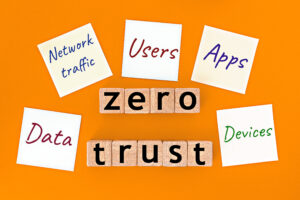We are living in an era of rapid urbanization and technological advancement. The proliferation of 5G networks across major cities in Asia-Pacific is set to accelerate the Internet of Things (IoT) revolution. With enhanced connectivity and reduced latency, innovators are developing sophisticated smart city applications to tackle urban challenges. Traffic optimization, environmental monitoring, and emergency response systems are just some of the IoT solutions empowered by 5G that could soon define modern urban living. Pioneering countries like China and South Korea provide a glimpse into the future of smart cities in the region. Discover how 5G and IoT innovations are revolutionizing urban life across Asia-Pacific.
The Rise of 5G Networks in Asia Pacific Is Powering Smart Cities
Accelerating IoT Innovation
- The rollout of 5G networks in major Asian cities is enabling innovative IoT solutions that improve municipal operations and enhance quality of life. With high bandwidth and ultra-low latency, 5G powers real-time data collection and analysis for smart city applications. In South Korea, 5G-connected IoT sensors monitor air pollution across Seoul, while intelligent traffic systems in Shenzhen, China leverage 5G connectivity to optimize traffic flows.
Improving Public Services
- Asian smart cities are using 5G and IoT to upgrade public infrastructure and amenities. ‘Smart lampposts’ in Hong Kong have environmental sensors and 5G connectivity to monitor weather and traffic. 5G-enabled security cameras in Shanghai use AI to detect anomalies and alert authorities in real-time. Meanwhile, 5G facilitates efficient management of utilities like electricity and water – smart meters in Osaka, Japan track usage remotely using 5G networks.
Building Sustainable and Livable Cities
- By harnessing 5G and IoT, Asian cities aim to become more sustainable, safe, and livable. 5G-powered environmental monitoring helps cities like Singapore gain insights into issues like waste, pollution, and flooding. Intelligent transportation systems can reduce traffic and emissions. And 5G-enabled public safety solutions, like emergency alert systems in Tokyo metro stations, help cities respond faster to incidents while smart lighting improves public security.
The deployment of 5G in the Asia Pacific is accelerating innovation in IoT and smart cities. Ultra-fast connectivity and low latency enable new solutions for traffic, safety, sustainability, and quality of life in urban environments. While countries like China, South Korea, and Japan currently lead 5G-powered smart city initiatives, the potential benefits to people and the planet will drive wider adoption across the region. With 5G and IoT, the cities of the future are being built today in Asia Pacific.
How 5G Enables Advanced IoT Applications for Smart Cities
Improved connectivity and reduced latency
- The 5G network provides faster data speeds, higher bandwidth, and lower latency compared to 4G LTE. This enhanced connectivity enables real-time communication between IoT devices and applications. The reduced latency, often less than 1 millisecond, allows for the near-instant transfer of data that can facilitate quick decision-making and response times for smart city solutions.
Advanced monitoring and management
- The 5G-IoT ecosystem offers sophisticated tools for monitoring, managing, and optimizing smart city infrastructure in real time. Environmental sensors can detect air pollution levels, rainfall, and temperatures, enabling prompt responses. Smart traffic systems can monitor vehicle flows and adjust traffic lights to reduce congestion. Public safety systems can leverage real-time data from security cameras and gunshot detection devices to dispatch emergency responders immediately.
Seamless interoperability
- 5G networks are built on open standards that allow IoT solutions from different vendors to interoperate smoothly. This seamless integration of infrastructure, software, and services from various providers accelerates the deployment of 5G-enabled smart city applications. Local governments and enterprises can choose preferred solutions for different needs and connect them into a cohesive ecosystem. Interoperability also makes it easier to scale up 5G-IoT systems over time.
The ultra-fast speeds, massive connectivity, and low latency of 5G networks combined with advanced IoT technologies are transforming cities into highly intelligent and responsive spaces. Early adopters like China and South Korea are leading the way, but 5G-enabled smart cities are the future for urban centers worldwide. With the right investments and policies, 5G can usher in a new era of technologically-enhanced living.

Smart Traffic Management With 5g-Enabled Solutions
Optimized Traffic Monitoring
- 5G networks facilitate the deployment of high-definition cameras and sensors across cities to monitor traffic conditions in real time. Connected cameras can detect traffic incidents, monitor vehicle and pedestrian flows, and identify traffic violations. The data collected is analyzed using AI to generate insights into traffic patterns and optimize traffic light timing. For example, smart traffic lights can detect emergency vehicles and change lights to green to clear a path. They can also adapt to fluctuating traffic volumes during peak and off-peak hours.
Intelligent Traffic Control
- 5G connectivity enhances vehicle-to-everything (V2X) communications, allowing vehicles to communicate with each other and surrounding infrastructure. V2X technology integrated with 5G networks can help minimize traffic congestion. It enables the development of connected vehicle applications for intelligent traffic control, such as cooperative adaptive cruise control, automatic emergency braking, and intersection movement assist. These solutions can potentially reduce travel times, improve road safety, and decrease environmental pollution from vehicle emissions.
Enhanced Navigation Services
- 5G-powered IoT solutions facilitate the collection and sharing of real-time traffic and road data to provide drivers and autonomous vehicles with enhanced navigation services. Crowdsourced data from connected vehicles and infrastructure is aggregated and analyzed to generate predictive traffic models and optimized routing recommendations. Navigation apps can suggest alternative routes to avoid congestion, reducing travel times. They can also warn drivers about potential hazards like accidents, road closures, or dangerous weather conditions along their route.
With 5G networks enabling high-speed, low-latency connectivity, smart cities can gain valuable insights to better manage traffic flows, ease congestion, and improve road safety. Integrated IoT and AI technologies are revolutionizing urban transportation through intelligent traffic monitoring, smart infrastructure, and enhanced navigation services. The future of smart mobility in APAC will depend on the widespread deployment of 5G and advanced V2X communications across metropolises.
Improved Public Safety and Security With 5g-Powered IoT
Enhanced Video Surveillance
- 5G networks provide the high bandwidth and low latency required for advanced video analytics and facial recognition systems. High-definition cameras equipped with computer vision technology can monitor public areas and detect anomalies in real-time. For example, cameras may identify unattended bags, unauthorized access to restricted zones, or aggressive behaviors. Upon detection, the system can alert the authorities to promptly respond before an incident occurs.
Emergence Response Optimization
- The ultra-reliable low latency communications (URLLC) feature of 5G networks enables the transmission of time-sensitive data between IoT devices and control centers. This allows emergency responders like police, firefighters, and paramedics to receive notifications instantly and navigate optimal routes based on live traffic conditions. Responders also gain access to building plans and hazard locations in advance to better prepare for emergencies.
Crowd Management and Control
- Densely populated venues like stadiums, transport hubs, and commercial districts require advanced crowd management solutions to ensure public safety. 5G-connected IoT devices such as high-resolution cameras, LiDAR sensors, and counting sensors can monitor crowd size, density, and flow in real time. Analyzing this data using AI helps operators detect overcrowding, obstruction of exits, or the onset of panic. Upon detection, operators can take corrective actions like controlling access points, directing crowds, or alerting security personnel.
In summary, 5G-powered IoT innovations in public safety and security are enabling smarter, faster responses to emergencies through enhanced connectivity, video analytics, and AI. However, the collection and use of personal data raise concerns over privacy that governments and vendors must address to gain public trust. With proper safeguards and oversight in place, 5G and IoT can make significant contributions to safer, more liveable cities.
Environmental Monitoring Gets a Boost From 5G Connectivity
With low latency and massive machine connectivity, 5G networks are enabling real-time environmental monitoring in smart cities across APAC. Air quality sensors deployed throughout urban areas can detect harmful pollutants and greenhouse gases, and then transmit the data instantaneously to monitoring systems. This allows governments to quickly identify sources of pollution and take corrective actions to safeguard public health.
- For example, South Korea’s capital city Seoul has implemented an environmental monitoring system powered by 5G that incorporates air quality sensors, weather monitors, and surveillance cameras. The system can detect abnormal changes in air pollution levels and alert authorities in real-time so they can curb emissions from vehicles and factories. 5G connectivity also allows the city to continuously track weather conditions that may exacerbate air pollution and issue advanced warnings to residents.
Noise pollution monitoring is another application of 5G-enabled environmental sensing.
Microphones installed in public places can detect excessively loud noises that disturb residents and transmit the data to monitoring systems. Local governments can then enforce noise control regulations and issue penalties to repeat offenders. 5G’s high bandwidth and low latency enable noise monitoring systems to capture and analyze sound with a high degree of accuracy.
- With 5G networks enabling dense deployments of environmental sensors across urban areas, cities can gain a holistic view of pollution levels and proactively take steps to improve the quality of life for citizens. Continuous monitoring of air and noise pollution will be crucial for governments to assess the impact of environmental policies and make data-driven decisions. 5G connectivity will serve as a key enabler of these smart city innovations advancing sustainability in the coming decades. Overall, enhanced environmental monitoring through 5G and IoT technologies will be vital for creating greener, healthier, and more liveable cities in APAC.
Summing Up
The deployment of 5G networks is set to transform smart cities in APAC through enhanced IoT capabilities. You can expect to see innovative solutions emerge across the region, revolutionizing key aspects of urban life. While early adopters like China and South Korea lead the charge, other countries are sure to follow suit in rolling out advanced 5G-powered IoT applications. With the promise of faster connectivity and lower latency unlocking new possibilities, the future looks bright for smart cities in Asia-Pacific. This technological shift brings exciting potential, so stay tuned as the 5G and IoT revolution unfolds.
More Stories
Starlink and OneWeb Gear Up to Transform South Korea’s Telecom Terrain
South Korea is entering the low Earth orbit (LEO) satellite communications field with strong government support for SpaceX’s Starlink & Eutelsat OneWeb.
Nokia Powers Next-Gen PON and Wi-Fi 7 Evolution
With the introduction of their co-existence network solution, advanced Wi-Fi 7 gateways, and a high-density 25G PON line card, Nokia empowers operators to meet the increasing demand for robust, high-capacity networks.
Nordic’s nRF9151 Powers Japan’s IoT Future with NTT DOCOMO LTE-M Certification
With the recent LTE-M certification of Nordic’s nRF9151 System-in-Package (SiP), witness a transformation in cellular IoT deployment across various industries.
Roblox Farming Craze Fuels Surging App Store Economy
As you dive into the dynamic world of digital economies, one phenomenon stands out: the Roblox farming craze. This surge,...
EastWest Bank Embraces Temenos SaaS to Propel Digital Transformation
EastWest Bank leads digital transformation in financial services through its new partnership with Temenos. The collaboration uses Temenos’ advanced Software-as-a-Service (SaaS) solution.
GCT Semiconductor and Giesecke+Devrient partner to launch eSIM solution for IoT devices
GCT contributes advanced semiconductor technology. Meanwhile, G+D brings strong expertise in embedded SIM (eSIM) and remote SIM provisioning.


